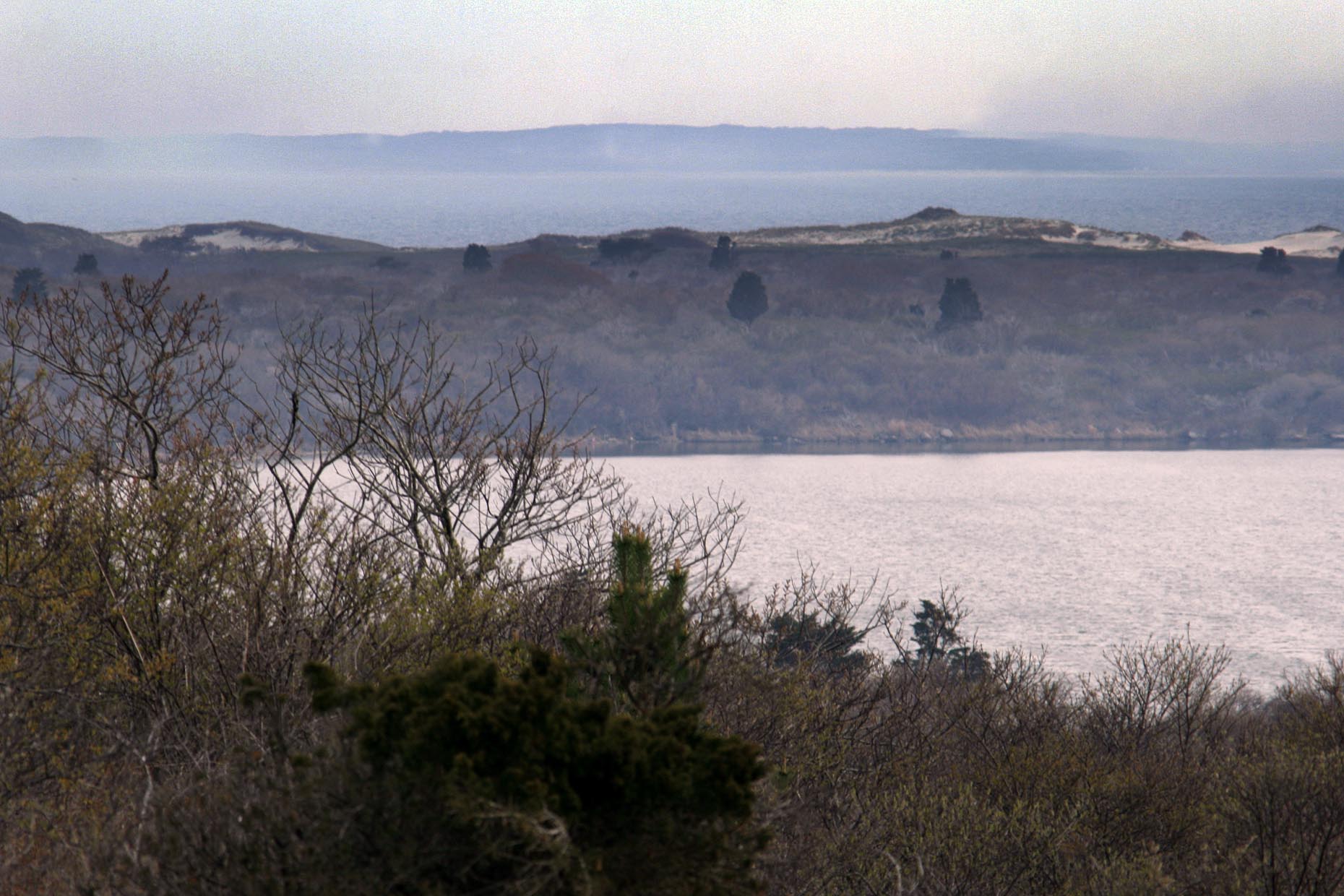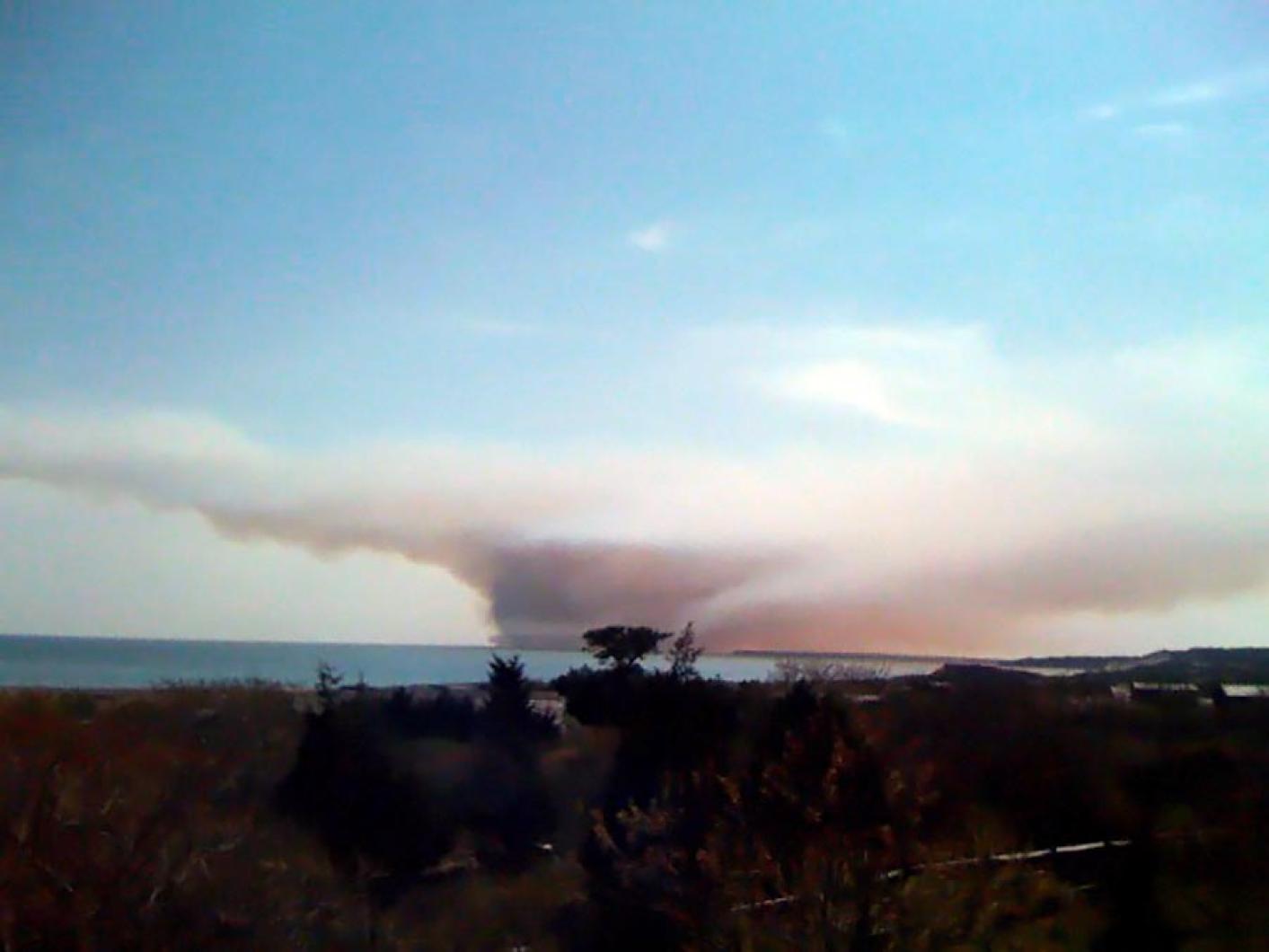Island emergency officials were inundated with calls from concerned residents Wednesday afternoon after a haze of smoke and ash descended on the Island from a brush fire on Noman’s Land, the small uninhabited island off the southern coast of Chilmark.
The fire was part of a controlled burn started by the U.S. Navy to clear away underbrush and expose unexploded ordinances left on Noman’s during training exercises over the past five decades. Noman’s Land is part of the town of the town of Chilmark, but is owned by the U.S. Fish and Wildlife Service.
Susan Schofield, supervisor for the Dukes County communications center, said yesterday the center received between 50 and 100 calls on Wednesday from worried residents asking where the smoke was coming from. Both police and town officials also reported a high number of calls about the smoke.
“It definitely kept us busy for a while. There were a lot of people wondering what was going on,” Ms. Schofield said.
Although the fire was kept under control and reportedly caused no problems on Noman’s or the Vineyard, questions did emerge on Wednesday and Thursday about the way the Navy handled the situation. Some residents and Island officials questioned why the Navy did not make more of an effort to alert the local newspapers or the individual police and fire departments.
The state Department of Environmental Protection did send a letter dated April 22 to the town of Chilmark that was a response to the Navy’s request to perform the controlled burn. The letter amounts to an approval with a list of conditions that was also sent to the town.
Chilmark executive secretary Tim Carroll sent a copy of the letter to the selectmen’s office of the other five towns.
The Navy built an airfield on the southern edge of Noman’s Land in 1942 that was used for bombing training during World War II. The airfield was abandoned by the Navy between 1945 and 1954, although use of the bombing range continued until 1996. Following an effort to clear the island of ordnance in 1997, the entire island was transferred to the U.S. Fish and Wildlife service for use as a wildlife refuge, primarily because it harbors many migratory birds.
Due to danger from unexploded ordnance, access is not permitted and the island is closed to the public.
David Barney, Base Realignment and Closure coordinator for the Navy, told the Gazette yesterday the Navy has planned the controlled burn for over a year in order to remove munitions that may have been uncovered by frost heaves or erosion over the past decade.
Mr. Barney said the fire was started from the air when helicopters dropped hundreds of spheres the size of ping pong balls filled with potassium permanganate. Just prior to being released, the spheres were injected with another component which causes them to ignite when they reach the ground, he said.
The controlled burn was performed by the firm of Nort Phillips, a subcontractor hired by the Navy. The spheres were dropped all across the 612-acre island, Mr. Barney said.
Mr. Barney said the Navy had a limited window for the burn operation because U.S. Fish and Wildlife imposed a May 10 deadline in order to protect migratory birds that will be returning to the island in the coming weeks. He said the Navy was forced to push back the operation until the week before that deadline due to a variety of considerations, including questions over funding.
He said the Navy went through all proper procedures to alert the public about the burn operation. He also said military officials carefully monitored the meteorological and ground conditions before giving the green light for the operation and kept in touch with the National Weather Service center in Taunton right up until the start of the burn.
Mr. Barney said the start of the burn went off without a hitch as a northeast wind pushed the smoke from the fire away from the Vineyard. Then the wind shifted and started coming out of the south and the smoke headed for the Vineyard, he said. “We actually had predicted a shift in the wind, but the change occurred earlier in the day then we had estimated,” Mr. Barney said.
Libby Herland, project leader for the U.S. Fish and Wildlife services, said the May 10 deadline was imposed to protect several species of birds including a small colony of terns and leach’s storm-petrels. She said the Navy is obligated to continue efforts to remove unexploded ordinance as part of a transfer agreement with U.S. Fish and Wildlife. She also said U.S. Fish and Wildlife plays no part in the planning or execution of controlled burns or other activities related to the removal of ordinances.
Mr. Barney speculated there was likely a number of unexploded ordinance still on Noman’s.
Smoke and ash drifted over many areas of the Vineyard, including Oak Bluffs, Tisbury and West Tisbury.

West Tisbury police chief Beth Toomey said her department received several calls from concerned residents about the smoke. “I think a lot of them were worried a home in their neighborhood was on fire. They had no idea what was going on . . . I know at one point in the afternoon the entire skyline was covered in this yellow haze,” she said.
Between 4 and 5 p.m., a cloud of smoke hung over portions of downtown Vineyard Haven and Oak Bluffs. One young couple walking along Sea View avenue with their dog used their cell phone to call a friend who was a volunteer firefighter. They were relieved when their friend told them the smoke was from a brush fire on Noman’s Land, but also a bit puzzled.
“If I didn’t know I would say [downtown] Oak Bluffs was on fire . . . this smoke is pretty serious,” the young man said.
Other reports said the smoke reached Woods Hole and as far away as Barnstable.







Comments (2)
Comments
Comment policy »